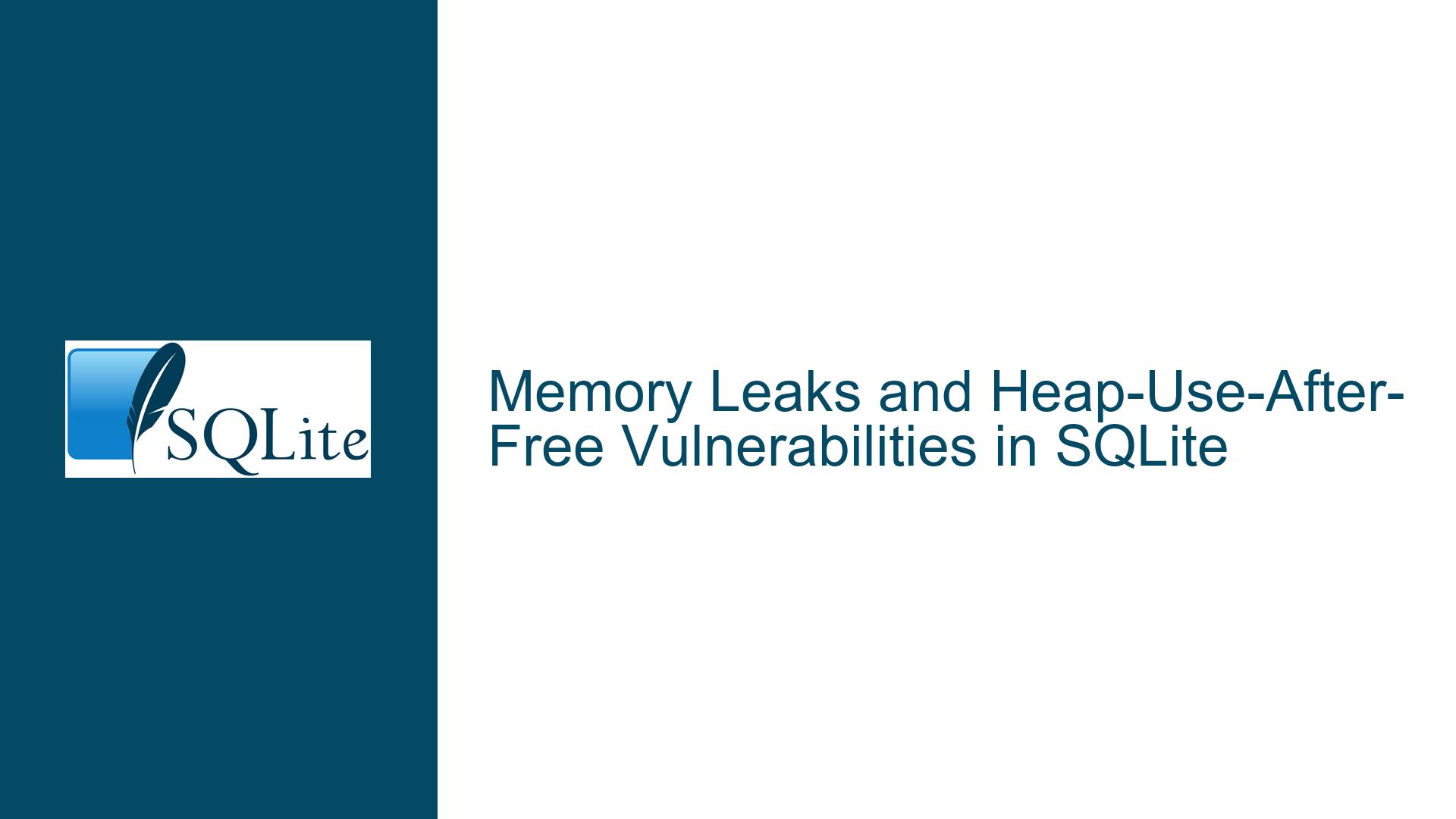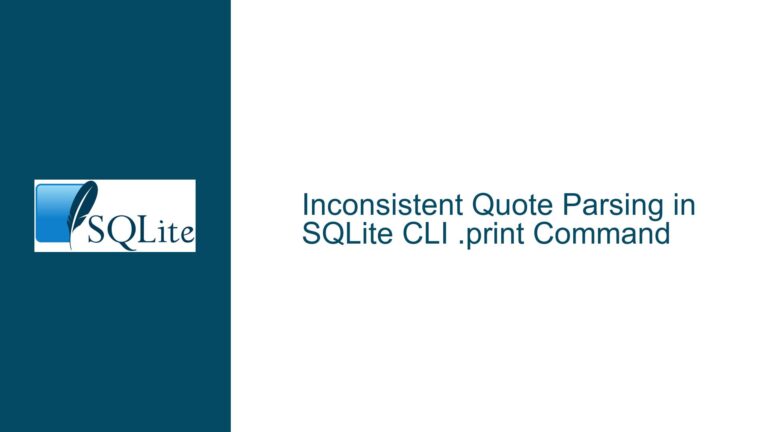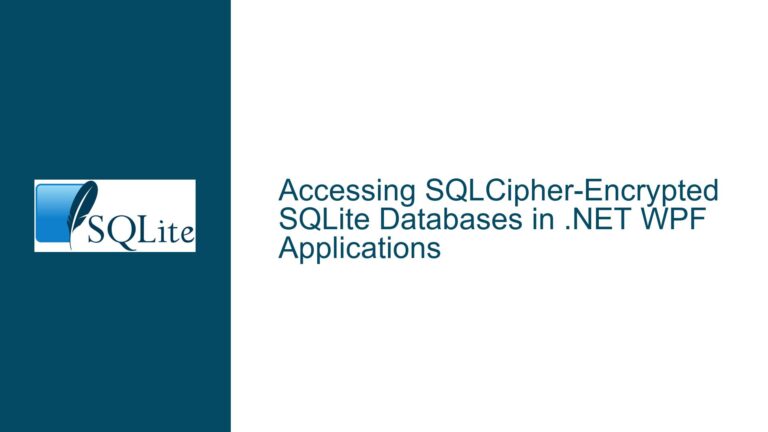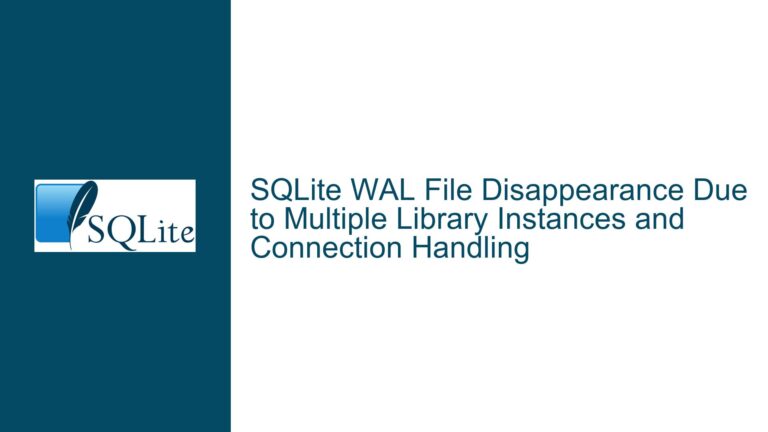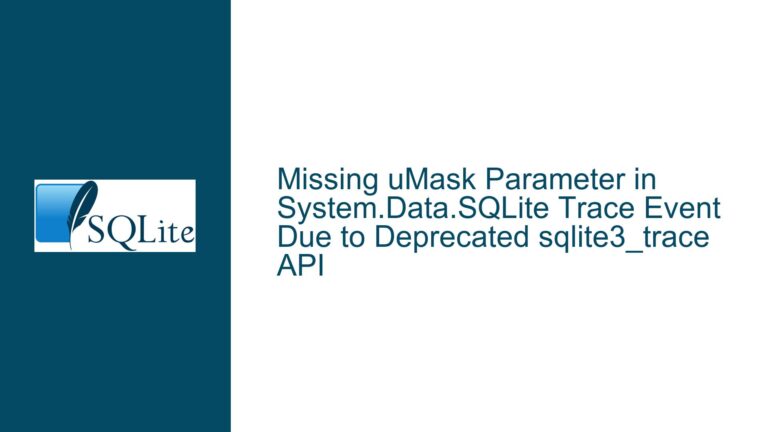Memory Leaks and Heap-Use-After-Free Vulnerabilities in SQLite
Memory Leaks and Heap-Use-After-Free: An Overview
Memory leaks and heap-use-after-free vulnerabilities are critical issues that can compromise the stability, performance, and security of SQLite databases. These vulnerabilities arise when memory allocated during the execution of SQLite operations is not properly released or when previously freed memory is accessed again. The consequences of these issues can range from degraded performance due to memory exhaustion to severe security vulnerabilities that could be exploited by malicious actors.
In the context of SQLite, memory leaks typically occur when dynamically allocated memory is not freed after use, leading to a gradual increase in memory consumption. This can be particularly problematic in long-running applications or those handling large datasets. Heap-use-after-free vulnerabilities, on the other hand, occur when a program attempts to access memory that has already been freed. This can lead to undefined behavior, including crashes, data corruption, or even arbitrary code execution if exploited by an attacker.
The provided error logs indicate that both memory leaks and heap-use-after-free issues were detected during the execution of SQLite operations. The memory leak was identified by the LeakSanitizer tool, which reported a direct leak of 40 bytes in one allocation. The heap-use-after-free issue was detected by the AddressSanitizer tool, which flagged an invalid memory access attempt after the memory had been freed. These issues were accompanied by various syntax errors and invalid command arguments, suggesting that the underlying cause may be related to improper handling of SQL commands or memory management during query execution.
Potential Causes of Memory Leaks and Heap-Use-After-Free in SQLite
Memory leaks and heap-use-after-free vulnerabilities in SQLite can be attributed to several factors, including improper memory management, incorrect handling of SQL commands, and issues with the underlying database schema or configuration. Below, we explore these potential causes in detail.
Improper Memory Management: SQLite relies on dynamic memory allocation for various operations, such as parsing SQL statements, managing database connections, and handling query results. If memory is not properly freed after use, it can lead to memory leaks. This can occur due to programming errors, such as failing to call the appropriate cleanup functions or incorrectly managing memory references. In the provided logs, the memory leak was traced back to a malloc call in the sqlite3MemMalloc function, which was not followed by a corresponding free call.
Incorrect Handling of SQL Commands: Syntax errors and invalid command arguments can also contribute to memory-related vulnerabilities. When SQLite encounters an invalid command, it may fail to properly clean up allocated resources, leading to memory leaks. Additionally, incorrect handling of SQL commands can result in heap-use-after-free vulnerabilities if the program attempts to access memory that has already been freed. The logs indicate multiple syntax errors and invalid command arguments, suggesting that the input SQL commands may have been malformed or improperly processed.
Database Schema and Configuration Issues: The schema and configuration of the SQLite database can also play a role in memory-related vulnerabilities. For example, setting the PRAGMA writable_schema option to on allows modifications to the database schema, which can introduce inconsistencies and lead to memory management issues. Similarly, incorrect settings for PRAGMA encoding, PRAGMA page_size, or other configuration options can affect how SQLite manages memory during database operations. The logs show that several PRAGMA statements were executed, which may have contributed to the observed issues.
External Factors: External factors, such as the operating system environment or the version of SQLite being used, can also influence the occurrence of memory-related vulnerabilities. The provided logs indicate that the environment included FFmpeg version 7.0 and Ubuntu 20.04.3 LTS. While these components are not directly related to SQLite, they can affect how SQLite interacts with the system and manages memory. Additionally, the version of SQLite being used may contain known bugs or vulnerabilities that contribute to the observed issues.
Troubleshooting Steps, Solutions, and Fixes for Memory Leaks and Heap-Use-After-Free
Addressing memory leaks and heap-use-after-free vulnerabilities in SQLite requires a systematic approach that includes identifying the root cause, implementing fixes, and validating the solution. Below, we outline detailed steps to troubleshoot and resolve these issues.
Step 1: Validate Input SQL Commands
The first step in troubleshooting memory-related issues is to validate the input SQL commands. Syntax errors and invalid command arguments can lead to improper memory management, so it is essential to ensure that all SQL commands are correctly formatted and valid. This can be done by reviewing the SQL commands for any obvious errors, such as missing semicolons, incorrect keywords, or invalid arguments. Additionally, using tools like SQLite’s .help command can provide guidance on the correct usage of SQL commands and help identify any invalid arguments.
Step 2: Review Memory Management Code
Once the input SQL commands have been validated, the next step is to review the memory management code in the SQLite implementation. This includes examining the use of malloc, free, and other memory management functions to ensure that all allocated memory is properly freed after use. Special attention should be paid to functions like sqlite3MemMalloc and sqlite3MemFree, which are responsible for managing memory in SQLite. If any memory allocations are not followed by corresponding free calls, these should be corrected to prevent memory leaks.
Step 3: Analyze Database Schema and Configuration
The database schema and configuration can also impact memory management, so it is important to review these aspects as part of the troubleshooting process. This includes checking the settings for PRAGMA statements, such as PRAGMA writable_schema, PRAGMA encoding, and PRAGMA page_size, to ensure they are correctly configured. Additionally, the database schema should be reviewed for any inconsistencies or errors that could affect memory management. If any issues are identified, the schema and configuration should be updated accordingly.
Step 4: Use Memory Analysis Tools
Memory analysis tools, such as LeakSanitizer and AddressSanitizer, can be invaluable in identifying and diagnosing memory-related issues. These tools can detect memory leaks, heap-use-after-free vulnerabilities, and other memory management problems by monitoring memory allocations and deallocations during program execution. The provided logs indicate that these tools were used to identify the memory leak and heap-use-after-free issues, so it is recommended to continue using them to validate any fixes and ensure that the issues have been resolved.
Step 5: Update SQLite Version
If the memory-related issues persist after reviewing the input SQL commands, memory management code, and database schema, it may be necessary to update the version of SQLite being used. Newer versions of SQLite often include bug fixes and improvements that address known memory management issues. Before updating, it is important to review the release notes for the new version to ensure that it includes fixes for the specific issues being encountered. After updating, the application should be retested to verify that the memory-related issues have been resolved.
Step 6: Implement Additional Safeguards
To prevent future memory-related issues, it is advisable to implement additional safeguards in the SQLite implementation. This can include adding error handling code to detect and handle memory allocation failures, using memory pools to manage memory more efficiently, and implementing automated tests to validate memory management during development. Additionally, regular code reviews and static analysis can help identify potential memory management issues before they become problematic.
Step 7: Monitor and Optimize Memory Usage
Finally, it is important to monitor and optimize memory usage in the SQLite implementation to ensure that memory-related issues do not recur. This can be done by using profiling tools to track memory allocations and deallocations, identifying any areas of excessive memory usage, and optimizing the code to reduce memory consumption. Additionally, setting memory limits and using memory management techniques, such as garbage collection, can help prevent memory leaks and heap-use-after-free vulnerabilities.
By following these troubleshooting steps and implementing the recommended solutions, it is possible to address memory leaks and heap-use-after-free vulnerabilities in SQLite and ensure the stability, performance, and security of the database.
